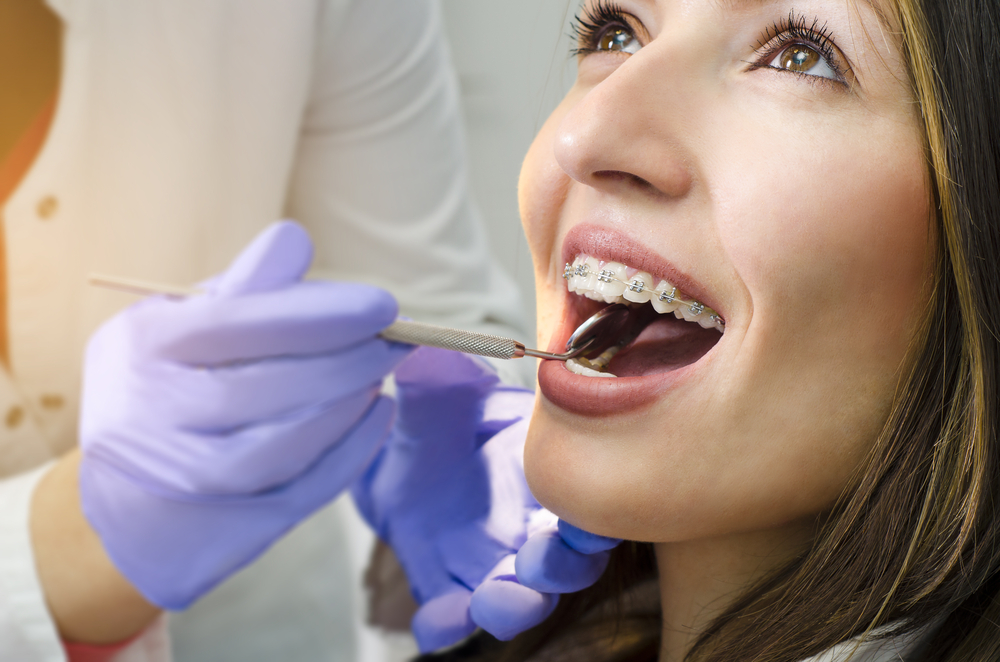
At Davis Orthodontics, we want you to get the most out of your time with braces — both before and after treatment. And as much as your Greer and Simpsonville orthodontists play a role, your new smile happens at home. Here, we’re telling you why white spots form after braces, how you can prevent them from occurring in the first place, and how to treat white spots if they’ve already appeared. (Hint: it starts with proper oral hygiene!)
What Causes White Spots on Teeth After Braces?
Chances are you probably know someone who has chalky white spots on their teeth and you’ve probably wondered how they got there. These spots, which commonly appear after braces treatment, are caused by decalcification of the teeth. What causes your teeth to decalcify? A number of factors can lead to this type of demineralization, but it typically happens as a result of harmful bacteria that has built up on the teeth.
When food debris and plaque are allowed to sit on your teeth for long periods of time, it causes an influx of bad bacteria in your mouth. This bad bacteria then produces acid which damages your tooth enamel, leading to the formation of white spots. These white spots after braces are essentially the beginning stages of cavities, all caused by improper oral hygiene.
If you have braces, you already know that it’s much trickier to brush and floss your teeth effectively. Food particles, plaque and bacteria love to hide in hard-to-reach places behind your brackets and wires, so it’s absolutely critical to take extra care when cleaning your teeth. But while bacteria and plaque are the primary causes of white spots, other factors like nutrition (such as sugary and acidic foods), genetics and using too much fluoride from a young age may also contribute to tooth decay.
How to Prevent White Spots from Braces
As with all things oral health, it’s a lot easier to prevent issues before they happen than it is to fix them once they’ve already occurred. The same goes for preventing white spots from braces: the more preventative measures you take during treatment, the lower your risk will be.
It’s safe to say that no one wants to see white spots on their teeth after braces. You’ve already invested a lot of time, money and effort into your new smile — you want it to look its absolute best when your braces come off! If you’re worried about developing white spots from braces, here are some steps you can take to prevent them.
- Brush your teeth. Yes, it sounds obvious but this really is the best way to prevent white spots on your teeth. Make sure to brush in the morning, before bed and after every time you eat to stop bacteria in its tracks, and take extra care to brush along the gumline and around your brackets.
- Floss every day. We know that flossing isn’t the most fun even without braces, but it’s even more challenging (and more important) to floss regularly with braces on. Be sure to floss at least once a day to get rid of harmful plaque and debris.
- Limit sugary and acidic foods. Sugary and acidic foods (like sour candies, lemons, vinegar-based items, soda and so on) exacerbate the decalcification of your teeth, which as you now know, causes white spots.
How to Fix White Spots from Braces
While prevention is always the best way to go, we understand that sometimes it’s already too late to avoid white spots from showing up. If you already have white spots on your teeth after braces, it doesn’t mean you’re stuck with them forever. There are still ways to treat white spots and get your smile back on track. Here’s how.
- Get hyper-vigilant about at-home oral health care. Even if spots have already formed, diligent oral hygiene can still help to rebuild your tooth enamel and minimize the appearance of mild spots.
- Remineralize your teeth. Since white spots are the result of remineralization, using remineralizing agents (both at home or at the dentist) can help restore your teeth. Talk to your Simpsonville or Greer orthodontist about your options.
- Use fluoride toothpaste. Fixing white spots starts with repairing your enamel. Fluoride naturally strengthens your teeth, so use a fluoride toothpaste or mouthwash regularly.
- Get dental veneers. Depending on the severity of your white spots, your dentist may recommend dental veneers. These super-thin coverings are made to match your tooth’s natural color and can cover up unsightly spots.
- Ask your dentist about microabrasion. In some cases, your dentist may be able to buff out the white spots using a technique called microabrasion. Basically, your dentist will lightly polish the affected teeth to make the white spots less noticeable.
If you’re worried about developing white spots after braces, our best advice is to take the best possible care of your teeth during treatment. If you recently got your braces off and you notice white spots, don’t worry. Contact Davis Orthodontics to discuss your treatment options and book a complimentary consultation today.

